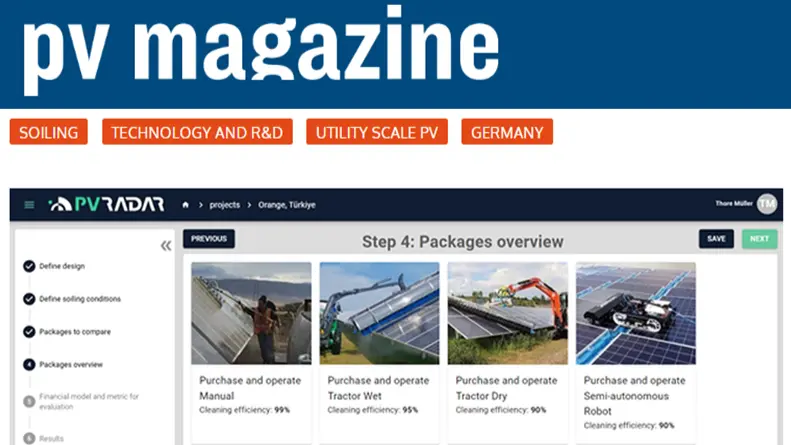Success stories
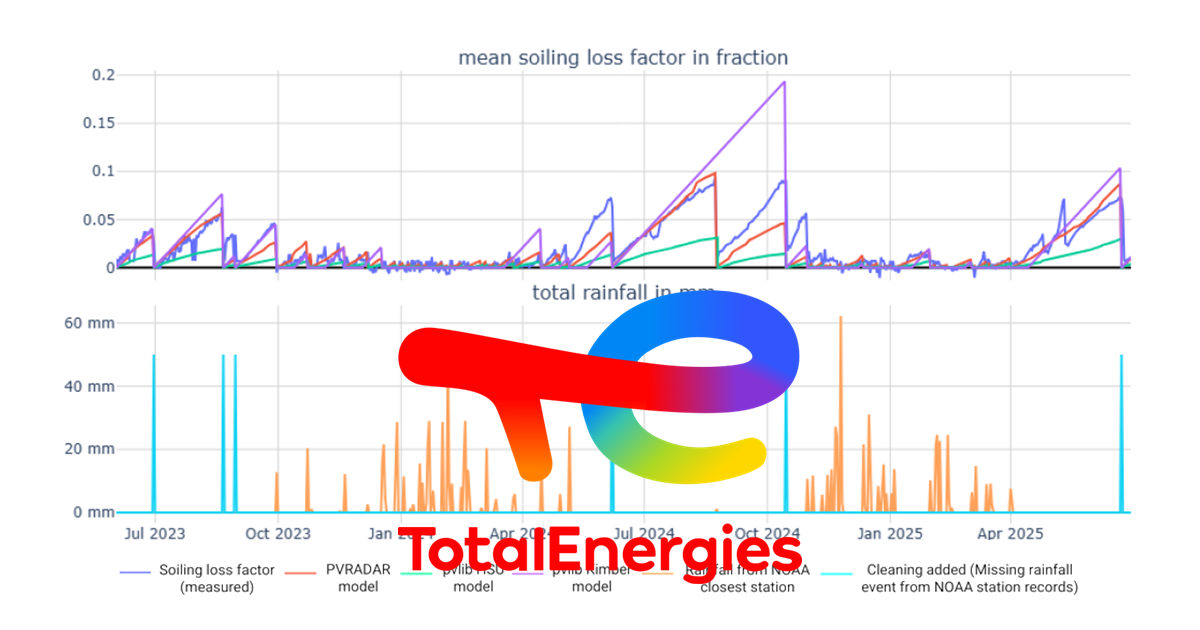
TotalEnergies validates PVRADAR as the most accurate soiling model across PV sites in the US
TotalEnergies conducted a blind validation of the PVRADAR soiling model across 9 U.S. PV sites. Using only location and mounting configuration inputs, PVRADAR achieved the highest accuracy (median RMSE = 1.9%), outperforming pvlib’s HSU (2.3%) and Kimber (3.1%), as presented at the 2025 PVPMC Workshop in Cyprus.
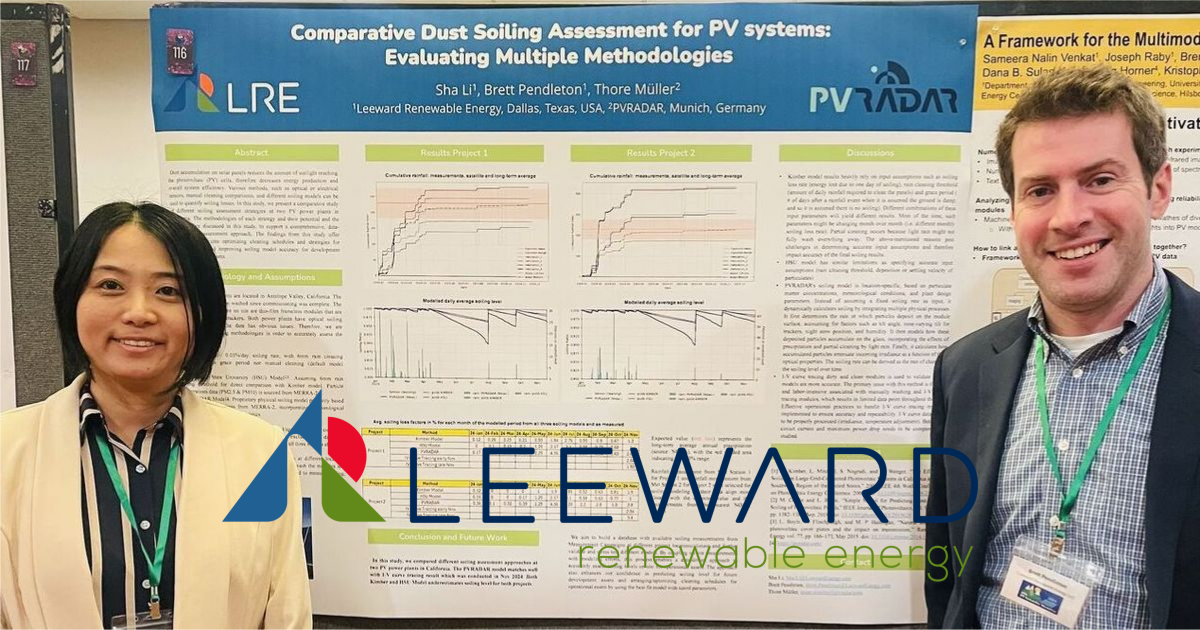
Leeward benchmarks soiling models at California PV site to guide cleaning
Leeward Renewable Energy and PVRADAR conducted a blind comparison of soiling models using I-V measurements at two PV plants in California. Results confirmed the accuracy of the PVRADAR model and its value for portfolio-wide decision-making.
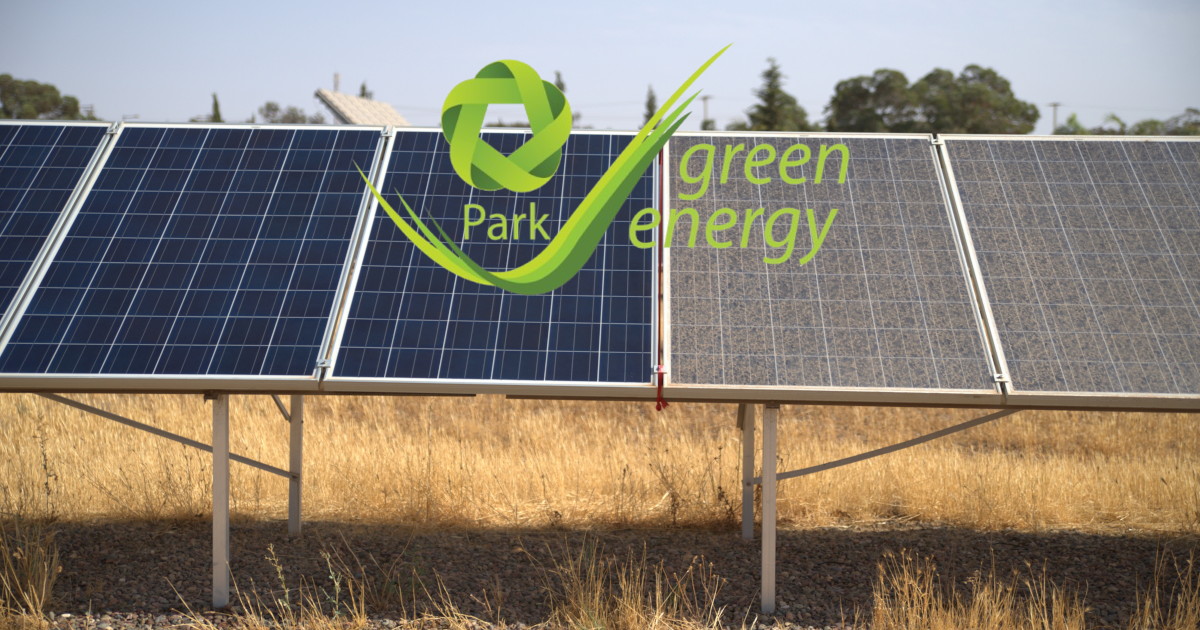
Green Energy Park accurately estimates soiling risk based on site measurements
Green Energy Park and PVRADAR partnered to assess soiling risks for a large-scale PV project in Morocco. Using local measurements and advanced modeling, cleaning strategies were optimized based on real conditions. The result: a data-driven plan that reduces soiling-related losses and cuts cleaning costs by up to 40%, supporting efficient procurement before construction begins.
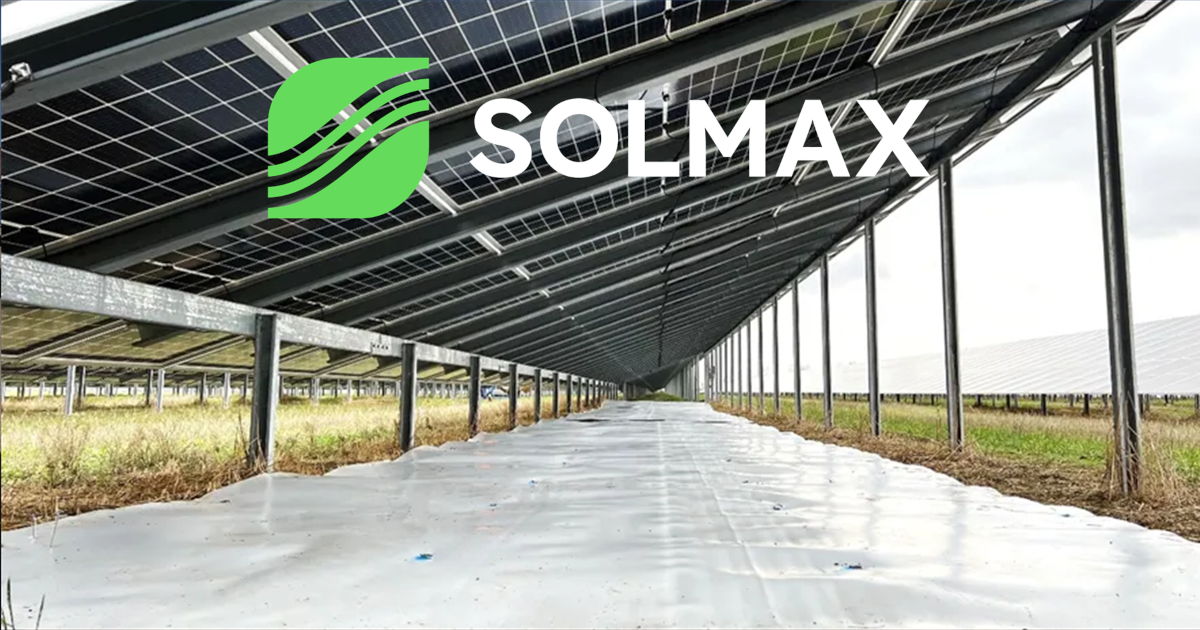
SOLMAX uses PVRADAR to enter the solar industry with GEOLUX®
Solmax developed GEOLUX, a reflective ground cover that boosts bifacial PV performance by raising ground albedo up to 75%. PVRADAR supported Solmax by creating a powerful sales platform that delivers fast, site-specific techno-economic assessments, helping demonstrate GEOLUX’s energy and financial benefits to clients with precision and confidence.
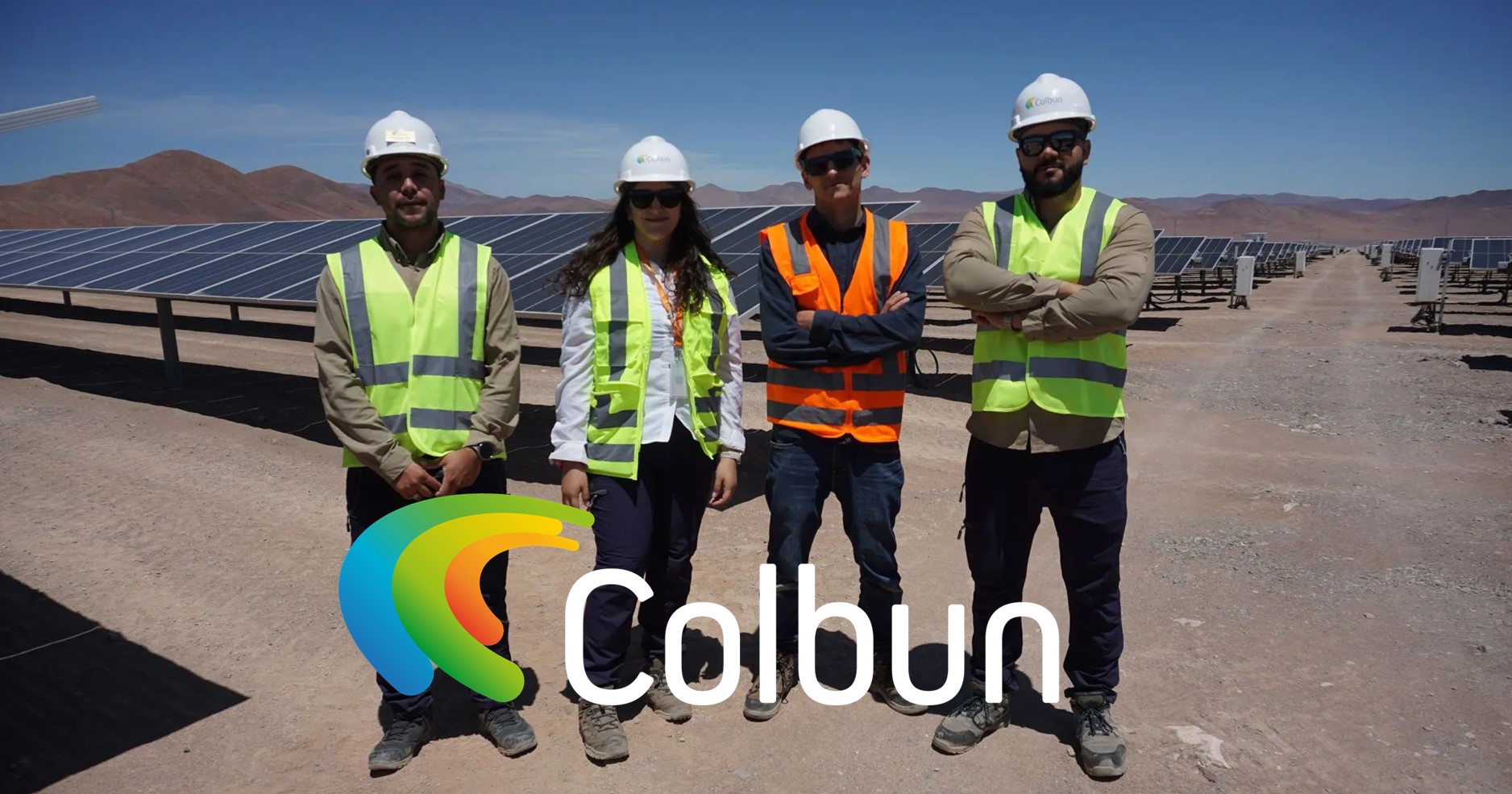
Colbún optimizes cleaning strategy for 233 MWp PV + BESS asset
PVRADAR helped Colbún optimize the 233 MWp Diego de Almagro solar plant by analyzing the impact of soiling, curtailment, and variable energy prices. The creation of a site-specific soiling model and a detailed digital twin, based on grid limitations and BESS operation, enabled a cleaning optimization that resulted in 15% cost savings.
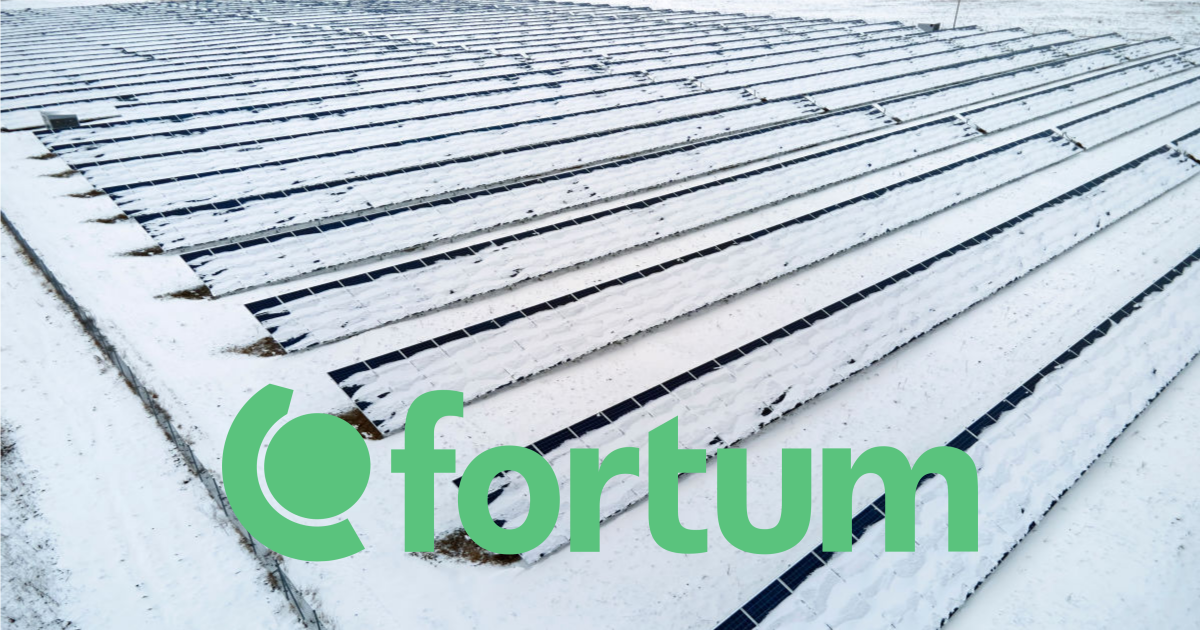
Fortum uses PVRADAR to quantify snow risks for solar projects in the Nordics
Fortum partnered with PVRADAR to quantify snow-related energy losses for their solar development portfolio in Finland and Sweden. As part of the project, PVRADAR developed a customized web application that allows Fortum’s teams to assess project-specific snow losses, compare different snow models, and dynamically explore the impact of design choices.
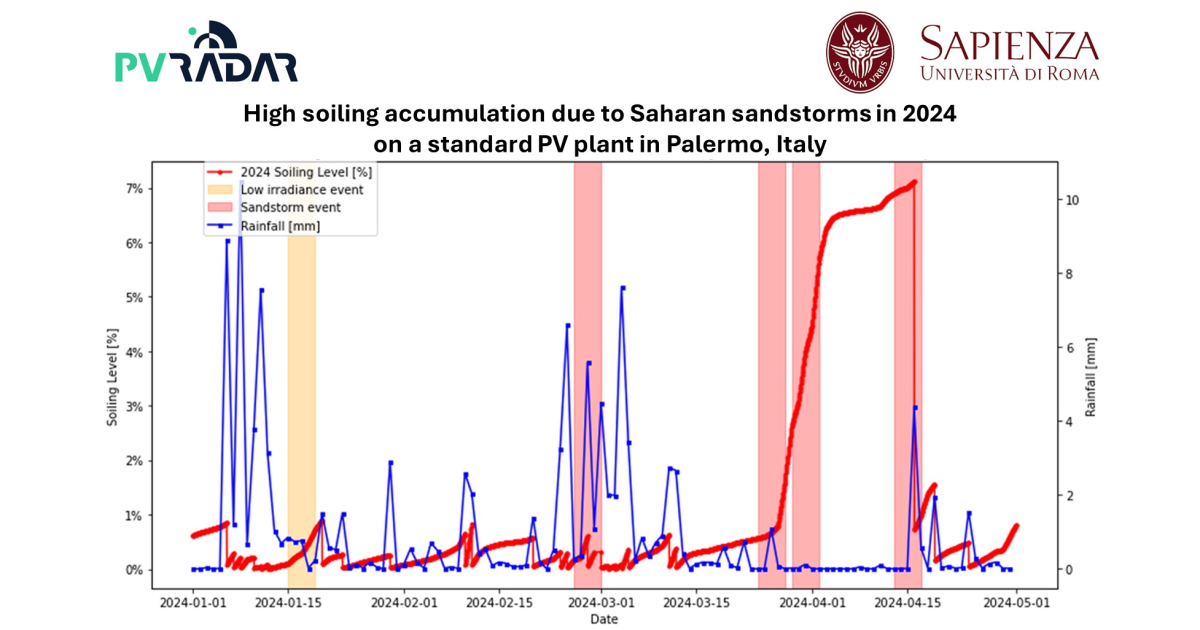
PVRADAR and Sapienza University reveal severe impact of Saharan sandstorms on PV performance in Europe
Our master student, Jaime Cortés examined the impact of Saharan dust storms on PV energy generation in Europe, analyzing irradiance reductions and soiling losses. Using PVRADAR’s tools, it highlights the need for preventive measures like cleaning strategies to maintain PV performance and grid stability in dust-affected regions.
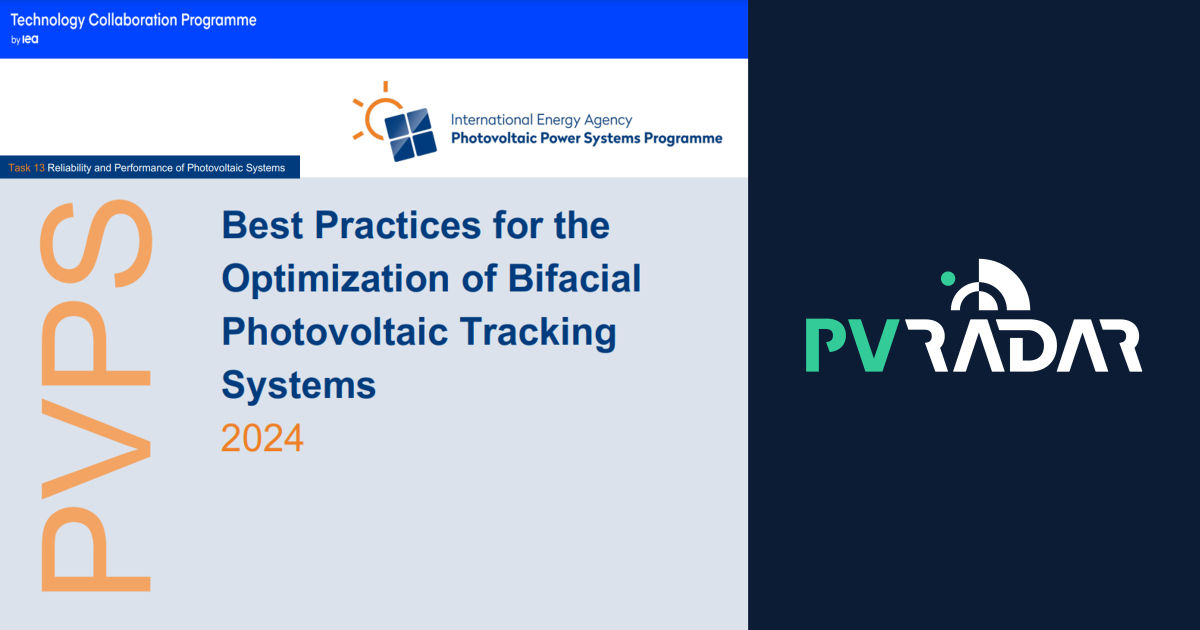
PVRADAR supported latest IEA PVPS Task 13 report - Best Practices for the Optimization of Bifacial Photovoltaic Tracking Systems
PVRADAR supported the IEA PVPS Task 13 report by estimating the benefits of albedo enhancers. The software evaluates site conditions, energy gains, and material costs, providing a comprehensive cost-benefit analysis, enabling data-driven decisions for optimizing bifacial PV systems.
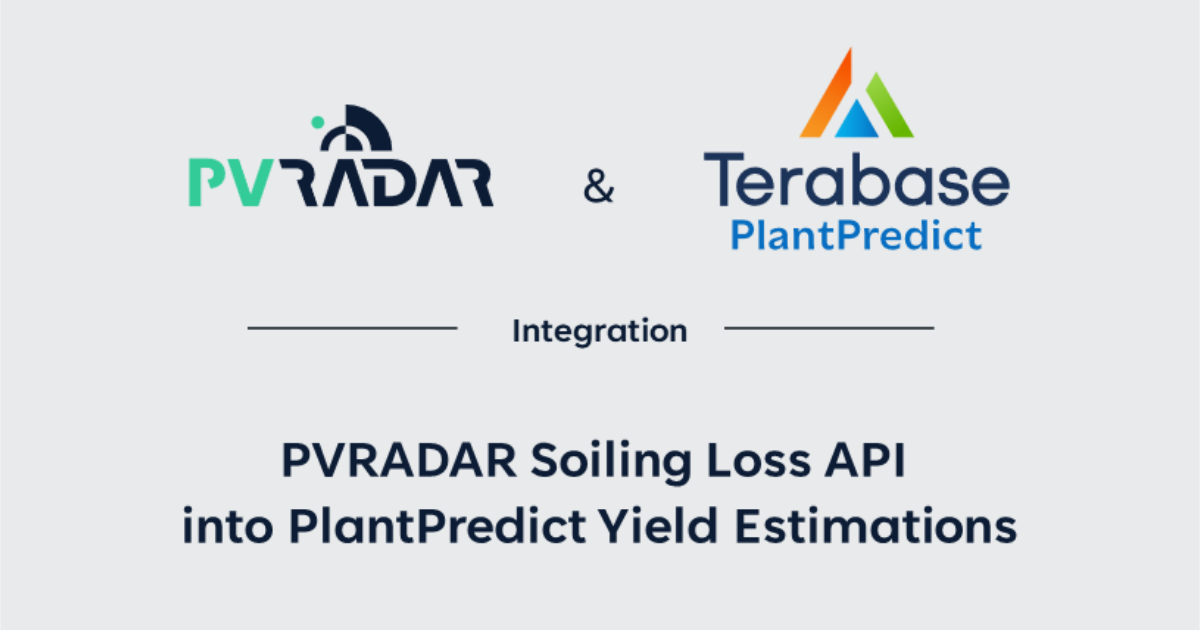
Integration of PVRADR Soiling API into PlantPredict yield estimations
PlantPredict users can now easily import 12 average monthly soiling loss factors for any location in the USA as inputs for the yield estimation. This P50 estimate considers typical dust conditions for the area, while excluding localized influences from human activity and birds.
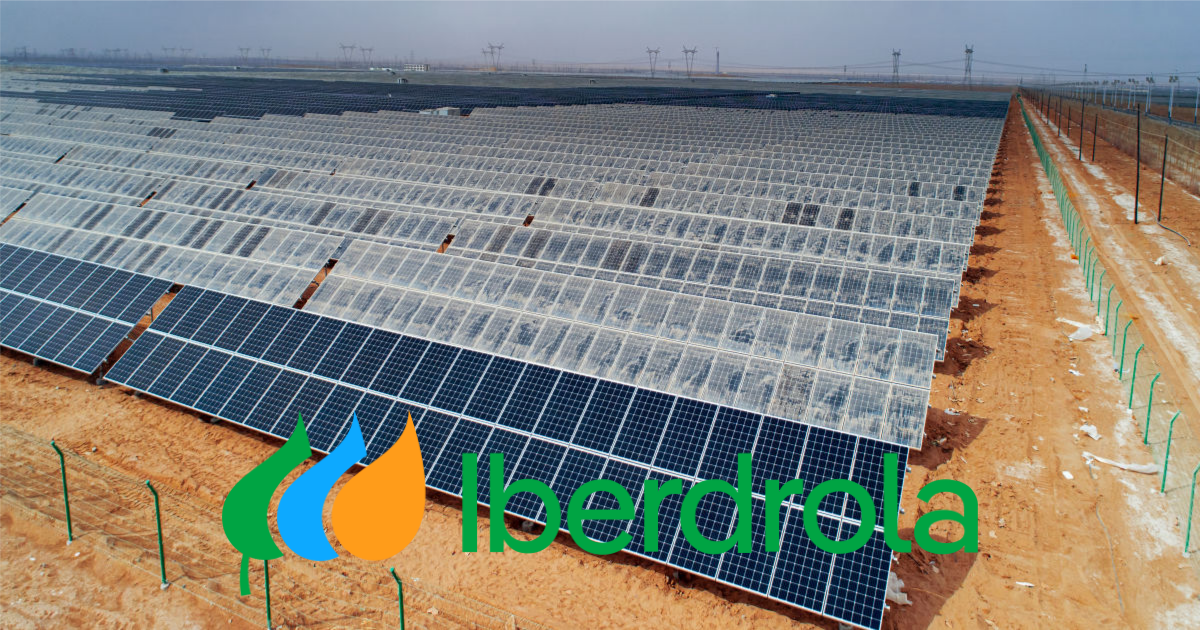
Iberdrola defines global soiling strategy with PVRADAR
Iberdrola partnered with PVRADAR to validate soiling models and define a consistent, data-driven approach to managing soiling risks across 15 PV projects in diverse climates. A customized web application enabled efficient model comparison, portfolio-wide analysis, and integration into internal workflows.
Media
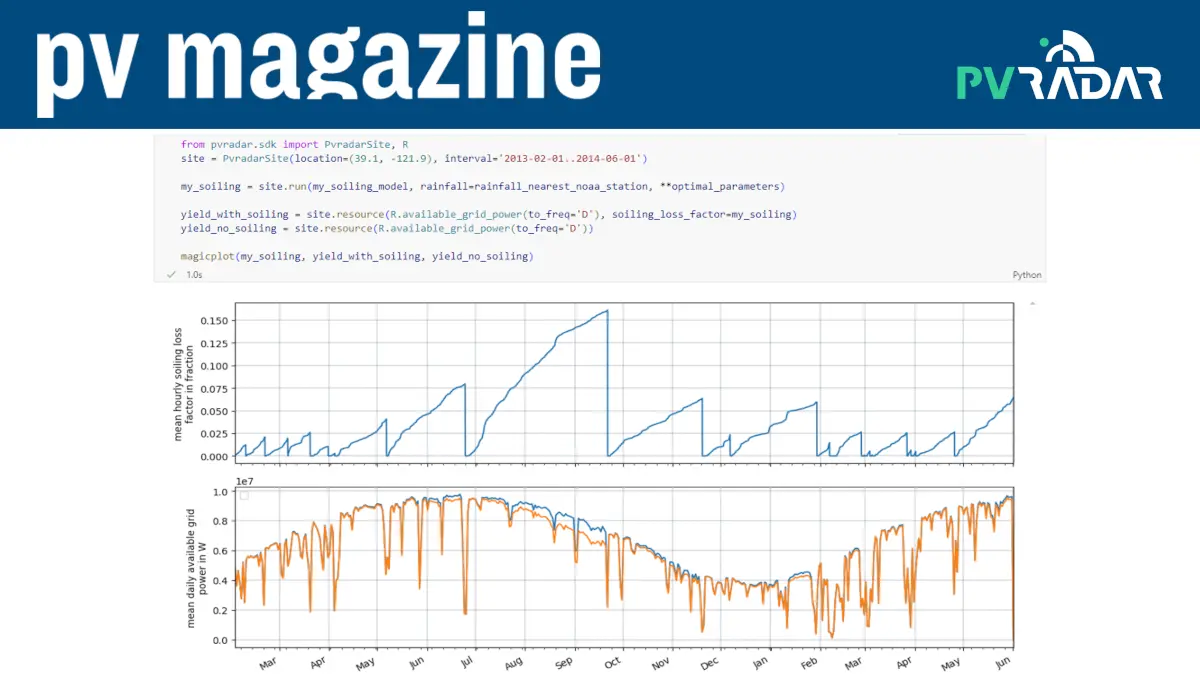
PVRADAR launches Python programming tool to ease site-specific loss modeling
German software company PVRadar Labs has released a Python programming package for solar asset owners and engineers that want to build site-specific models.
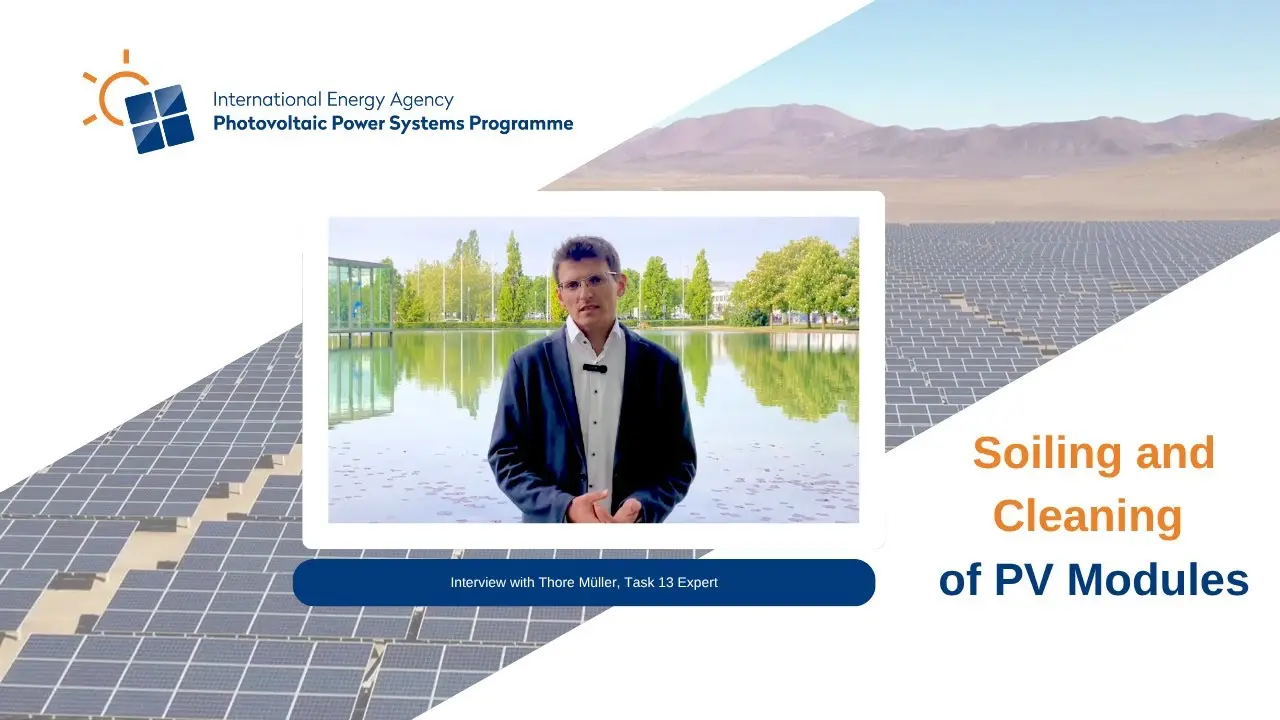
IEA PVPS interviews Thore Müller on Soiling and Cleaning
Thore Müller highlights soiling as a major cause of energy loss in PV systems, especially in harsh environments. In this interview, he discusses how soiling varies by climate, its impact on performance, effective cleaning strategies, how to optimize maintenance schedules, and future innovations in mitigation. The video offers practical insights for maximizing PV efficiency under real-world conditions.
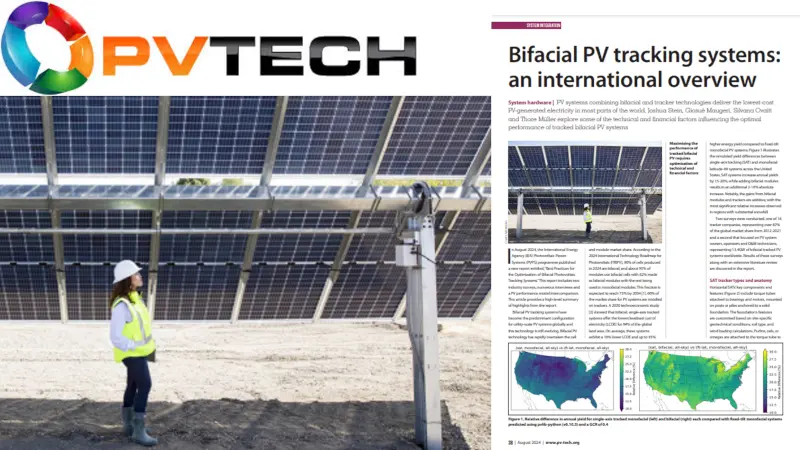
Bifacial PV tracking systems: an international overview
PV systems combining bifacial and tracker technologies deliver the lowest-cost PV-generated electricity in most parts of the world. Joshua Stein, Giosuè Maugeri, Silvana Ovaitt and Thore Müller explore some of the technical and financial factors influencing the optimal performance of tracked bifacial PV systems
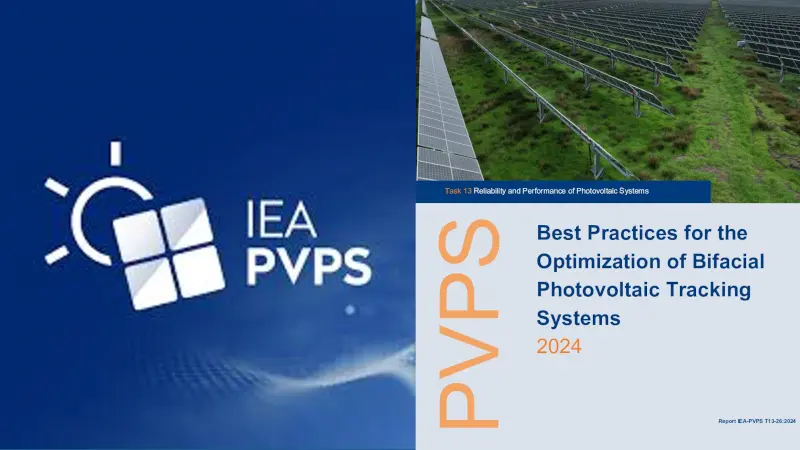
Best Practices for the Optimization of Bifacial Photovoltaic Tracking Systems
This report by the IEA PVPS workgroup 13 offers a detailed overview of the latest best practices and innovations in the deployment of bifacial photovoltaic (PV) tracking systems. PVRADAR has contributed to this report as main author of chapter 2.5 on albedo optimization.
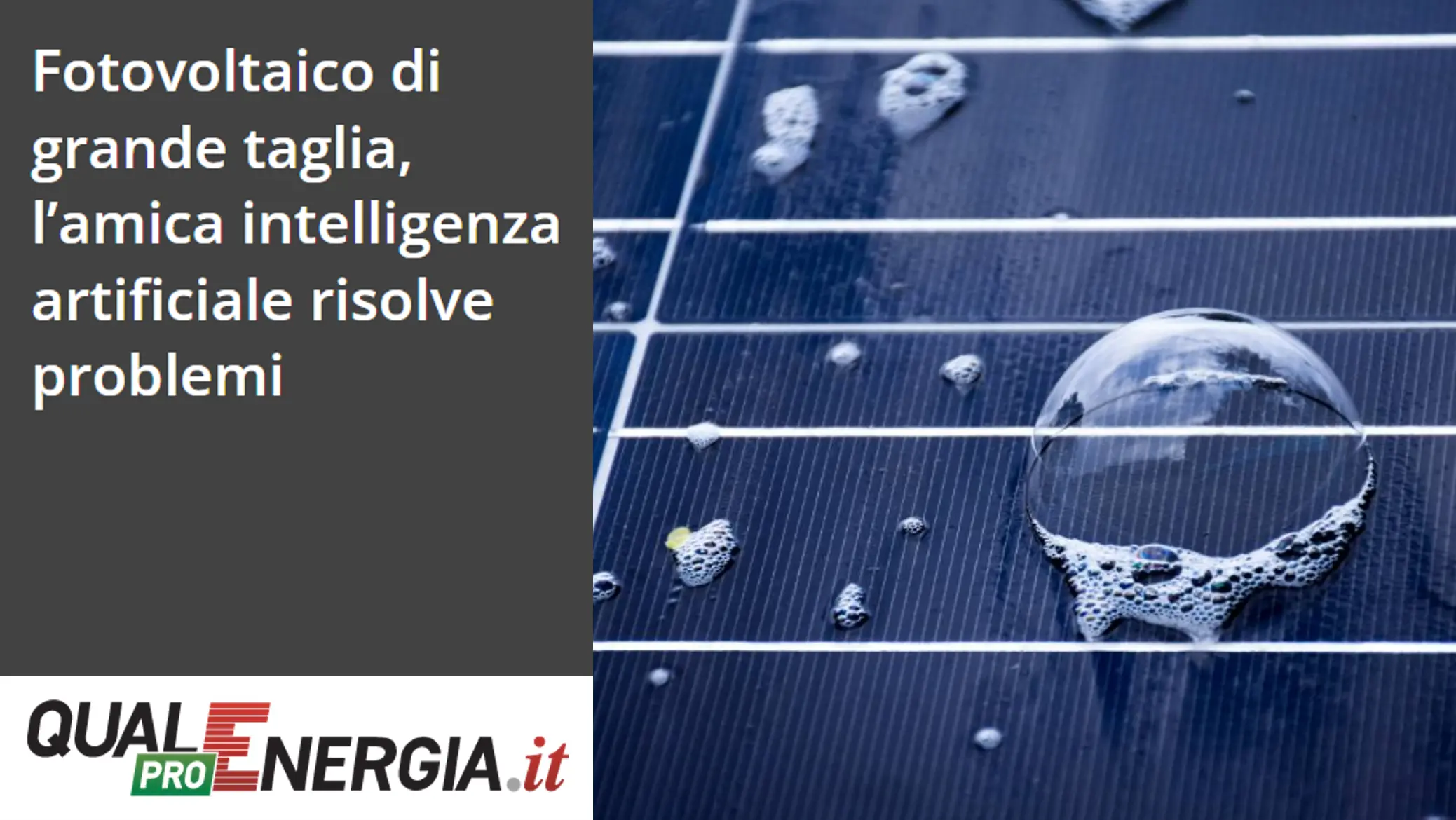
Large-scale photovoltaics, friendly artificial intelligence solves problems
Large-scale PV systems require meticulous optimization of numerous variables, relying on vast amounts of data and AI for higher profitability. Accurate design, based on detailed data collection, is crucial to avoid discrepancies between expected and actual performance.
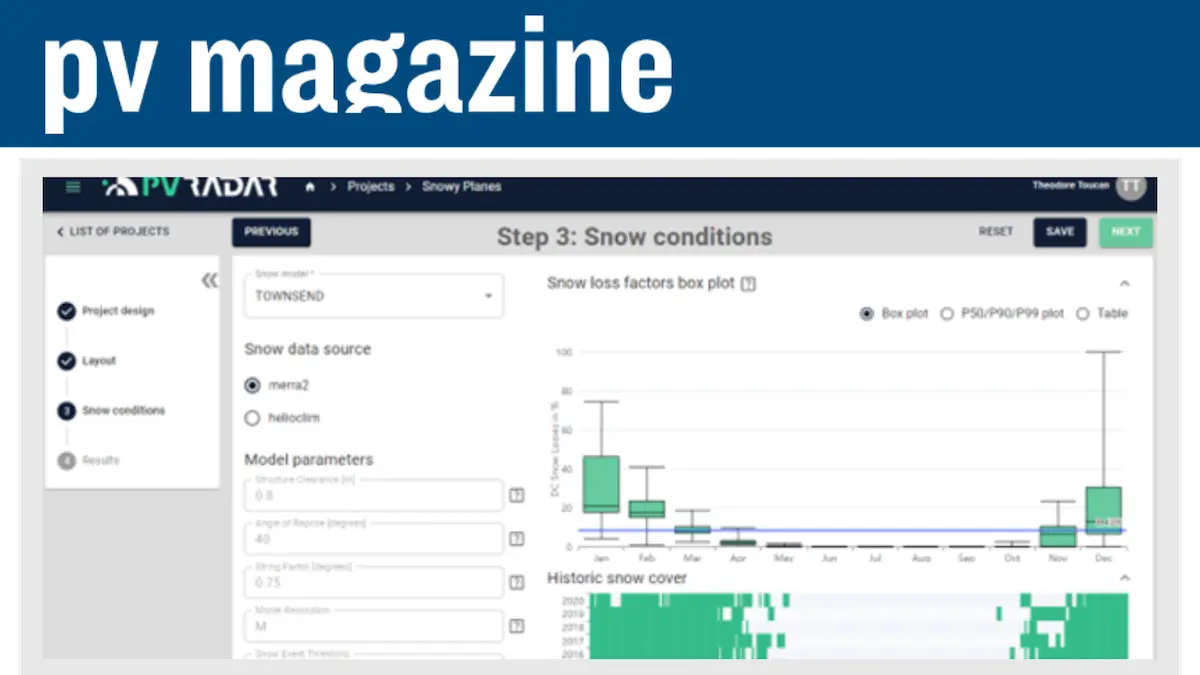
PVRADAR offers solar project risk assessments factoring in historical climate data
“PVRADAR Labs has expanded its software platform to include PV project risk assessment functionality, reportedly enabling more realistic performance estimates based on historical climate data”
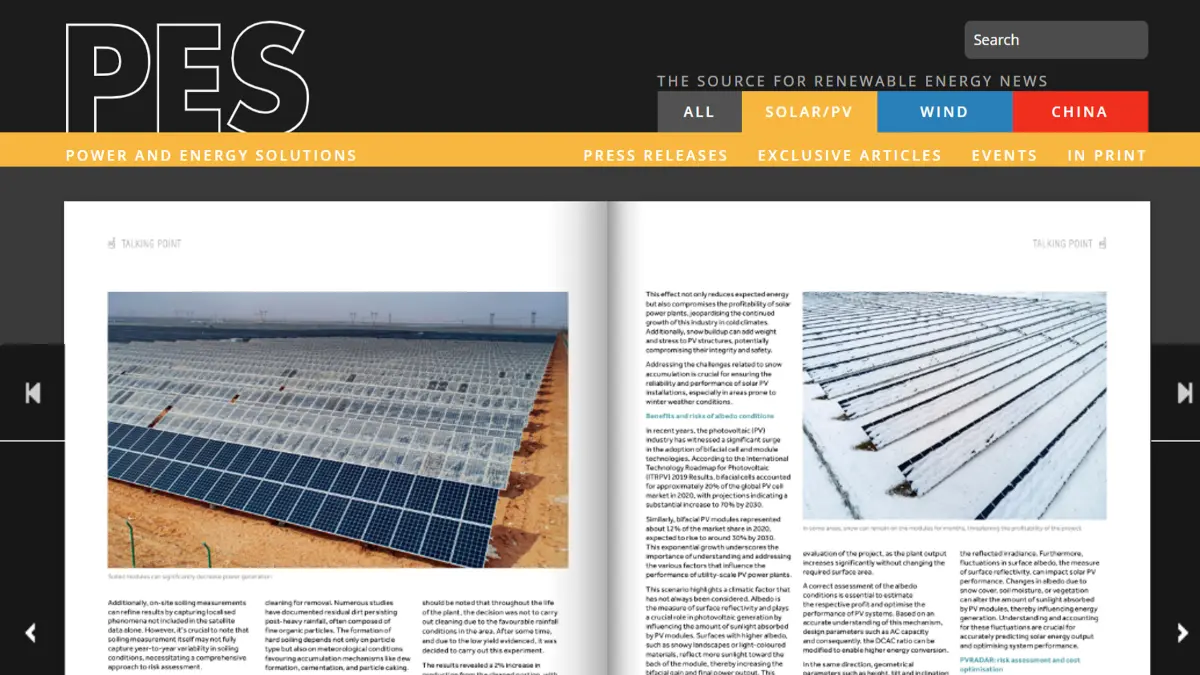
Securing solar investment: strategies for world class performance and reliability
“A recent study found that ‘solar assets are underperforming by an average of 8%’. Part of the problem is that the average photovoltaic project is designed based on standard values for climate-related losses that bear no relation to reality” PES, issue 128, p.84-87
Blog
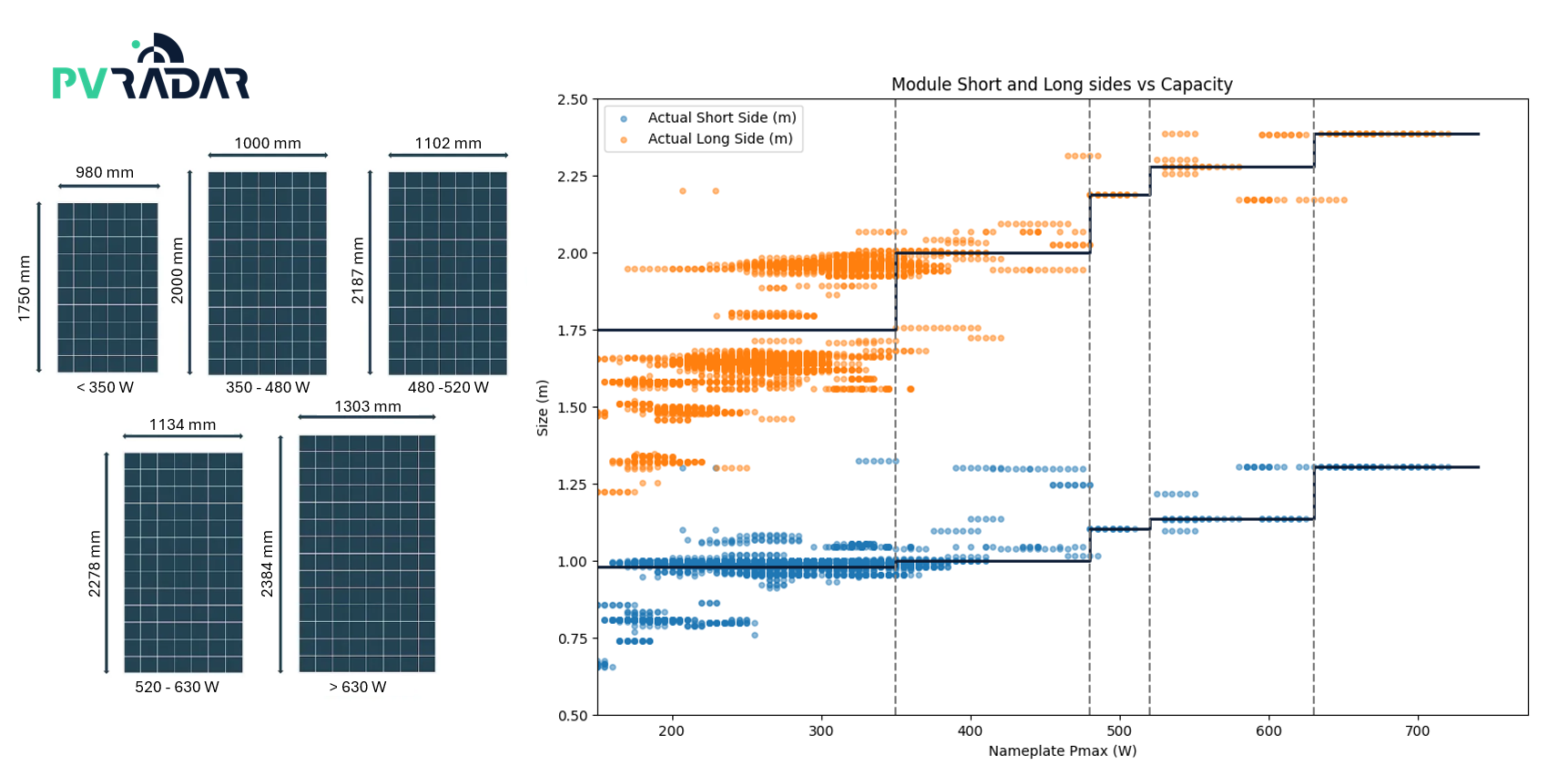
A Practical Solution for PV Module Dimension Variability
The diverse power capacities and dimensions of photovoltaic (PV) modules complicate operational tasks like cleaning and albedo enhancer material estimation. While newer high-capacity modules have seen efforts toward standardization, older models still vary widely in size. Our analysis of over 21,000 modules from the California Energy Commission led to a step function that classifies modules by power capacity, offering practical size estimates. This approach accounts for both older and newer models, providing a simple solution to streamline the analyses of cleaning strategies and high-albedo material use.
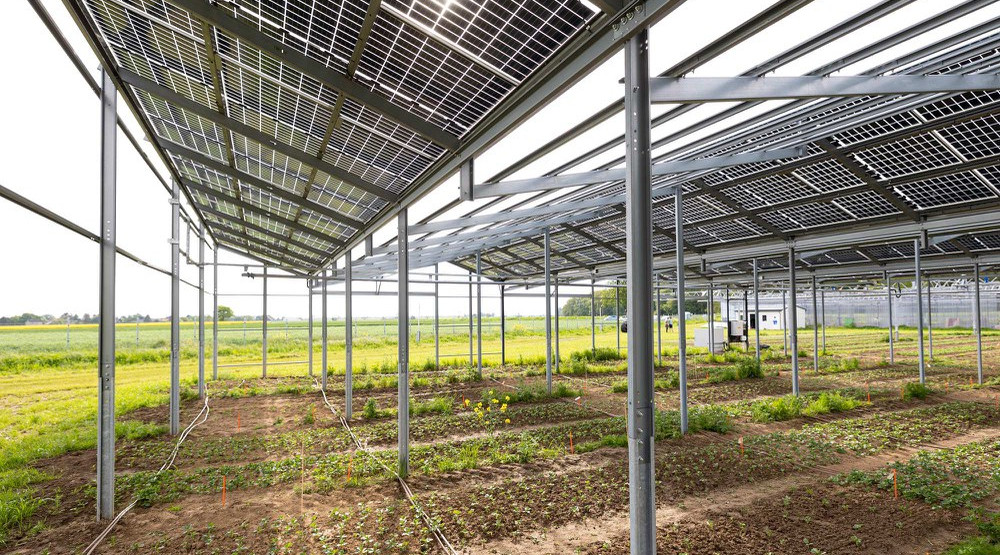
PVRADAR part of Agri-PV research project
PVRADAR Labs, in partnership with Volateq and Forschungszentrum Jülich, has launched the "APV-Monitor" project to optimize agri-photovoltaic (Agri-PV) systems. The project focuses on developing an automated drone-based monitoring solution to improve the efficiency and profitability of Agri-PV operations, integrating cutting-edge data analysis and validation in real-world environments.
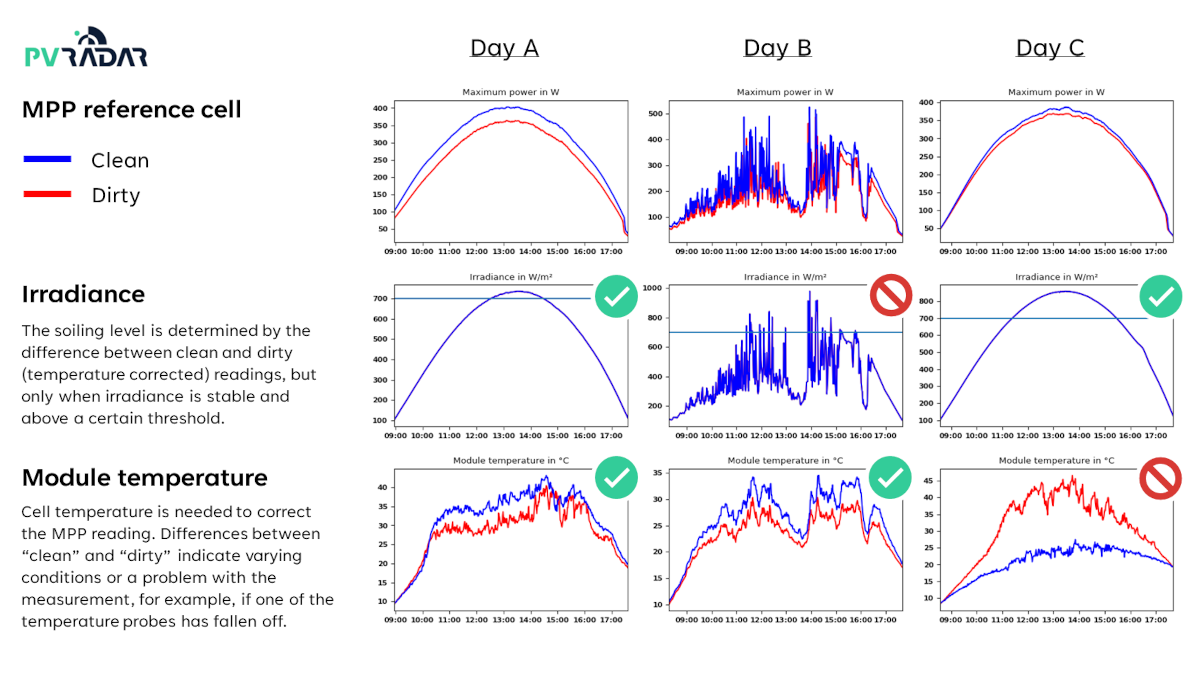
Soiling Measurement Guide Part 2/2: Common issues and how to avoid them
A summary of insights from extensive hands-on experience in soiling measurements and data analysis in the PV industry: addressing common issues and how to avoid them. This article discusses unstable measurement conditions, human error, and environmental influences, providing practical recommendations to ensure accurate and reliable soiling measurements. Topics include sensor placement, regular data review, the importance of measuring both irradiance and cell temperature, and strategies for managing environmental factors like bird droppings and snow.
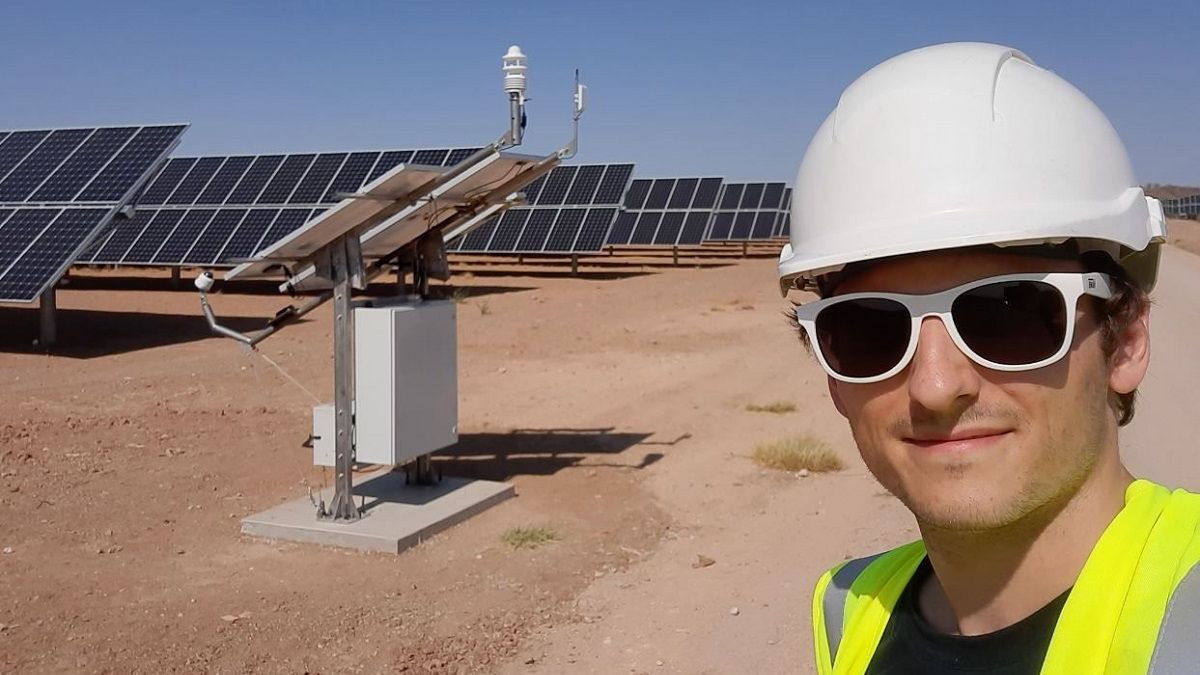
Soiling Measurement Guide Part 1/2: Choosing the right soiling sensor
A summary of insights from over seven years of hands-on experience in soiling measurements and data analysis in the PV industry: how to accurately measure soiling, the trade-offs between accuracy and cost, and the pitfalls of optical sensors compared to electrical sensors. This article provides clear recommendation for the selection of the right measurement principle, balancing cost and accuracy, and optimizing measurement strategies for various applications.
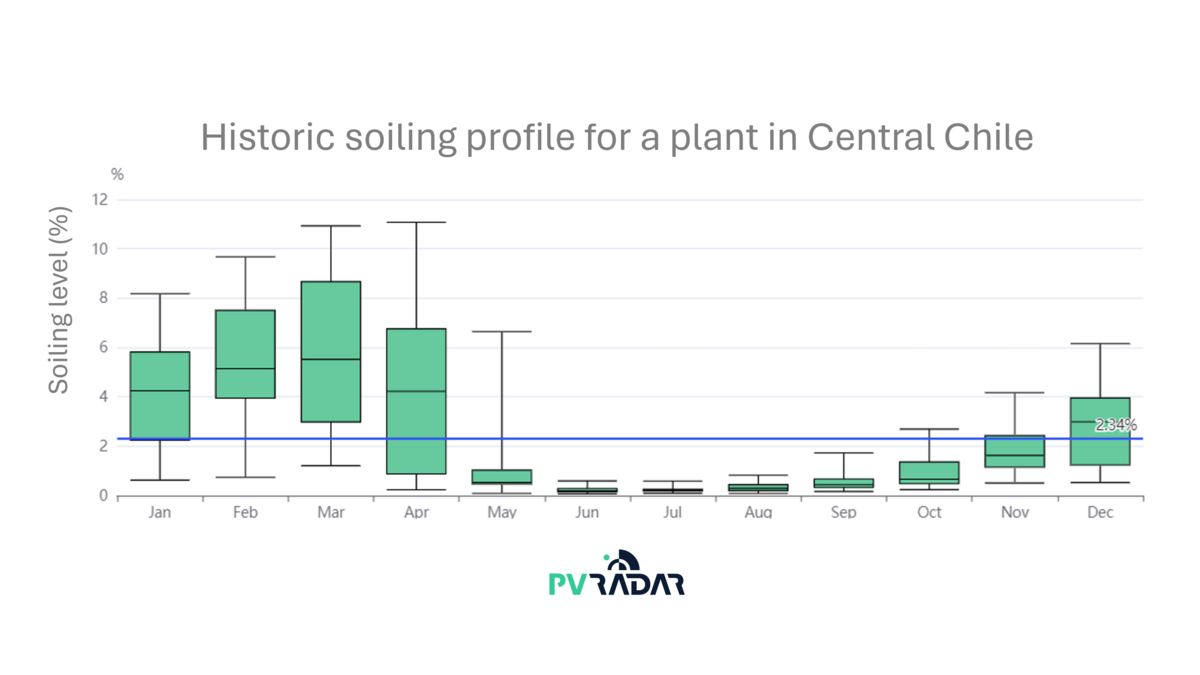
Assuming 2% soiling loss threatens project profitability
Assuming a constant 2% soiling loss in PV project development often leads to revenue miscalculations. This flawed practice, common due to time and resource constraints, fails to reflect actual conditions, especially in high-soiling areas. Even in moderate soiling regions like Central Chile, a plant with soiling averaging 2.3% shows how small discrepancies can hide significant effects, as soiling peaks coincide with periods of maximum production. Accurate soiling assessments are essential for realistic energy yield estimates and ensuring project profitability. Decision-makers should prioritize detailed soiling analysis to secure the financial success of PV projects.
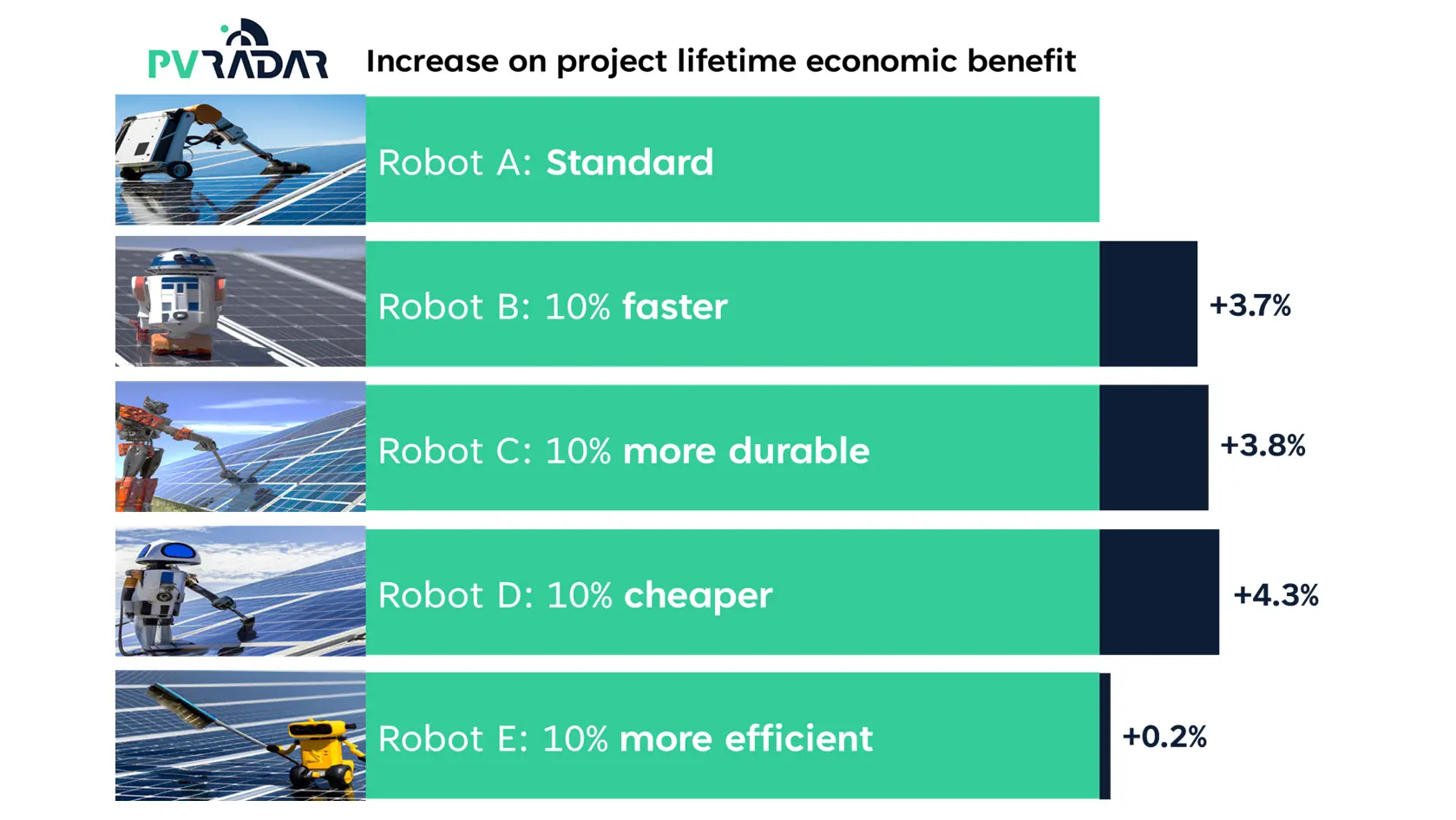
Choose the best fully-autonomous cleaning robot for your project with PVRADAR
How do you select the most cost-effective cleaning robot for your project? In places with heavy soiling, fully autonomous robots are a viable solution to keep soiling losses under control. But which one should you choose from the wide range on the market? The cheapest, fastest, most efficient or the most durable?
Using PVRADAR, we show how five different fully autonomous robotic solutions work in a sample project in Chile.
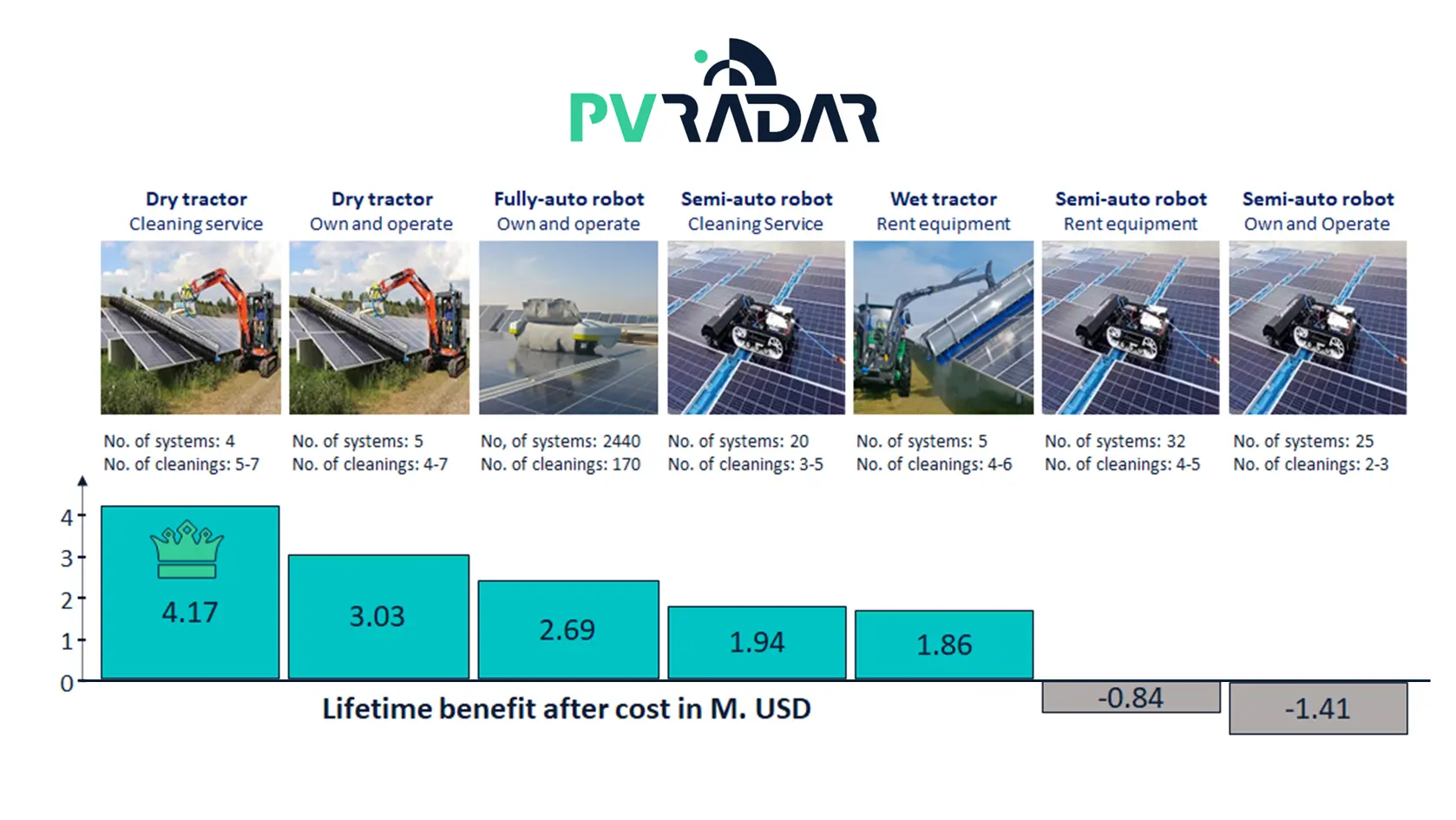
Soiling assessment and cleaning optimization with PVRADAR
The decision on how to clean your PV plant is complex. Not cleaning can result in huge revenue losses, while suboptimal strategies can generate more costs than benefits. In order to find the most cost-effective cleaning strategy, many different scenarios have to be calculated and compared, taking into account all technical details and related costs.
PVRADAR solves this challenge in an easy, fast and accurate way, letting you get the most out of your PV project.

